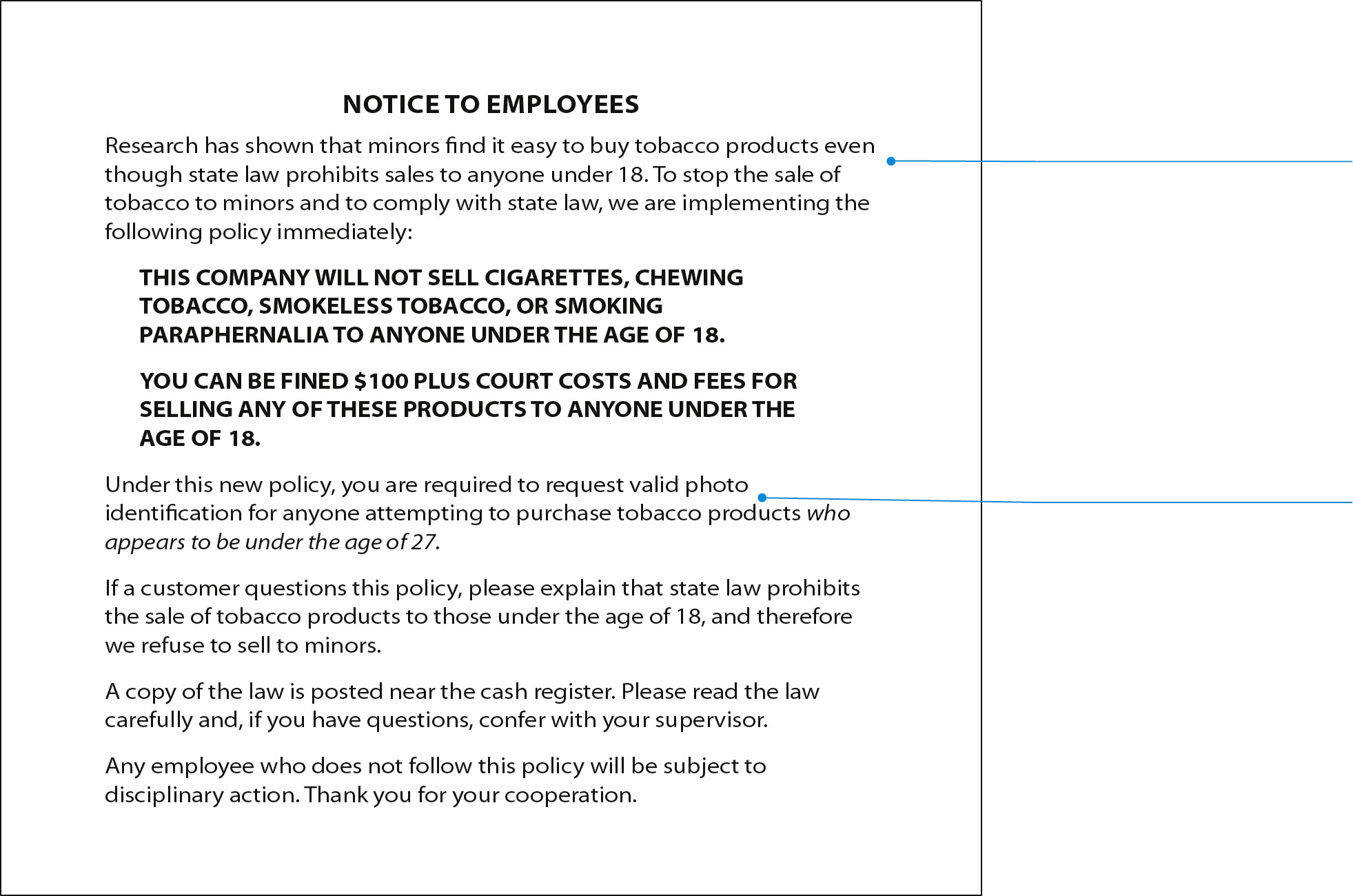Writing Directives
In a directive, you explain a policy or a procedure you want your readers to follow. Even though you have the authority to require your readers to follow the policy, you want to explain why the policy is desirable or at least necessary. You will be most persuasive if you present clear, compelling evidence (in the form of commonsense arguments, numerical data, and examples); consider opposing arguments effectively; and present yourself as cooperative, moderate, fair-minded, and modest. Figure 12.1 is an example of a directive.

The writer, the owner of a convenience store, begins with a clear explanation of the problem the directive addresses. Presenting the reasons for the new policy shows respect for the readers and therefore makes the directive more persuasive.
The writer uses a polite but official tone because the new policy is a policy, not a request. Notice that the directive specifies a penalty for not adhering to the policy and directs readers to their supervisors if they have questions.